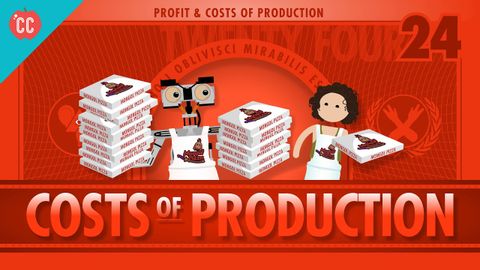收入、利潤和價格。經濟學速成班#24 (Revenue, Profits, and Price: Crash Course Economics #24)
 沒有此條件下的單字
沒有此條件下的單字US /ˈævərɪdʒ, ˈævrɪdʒ/
・
UK /'ævərɪdʒ/
- n. (c./u.)平均
- v.t.算出...的平均數
- adj.平均的;一般的,通常的;中等的
US /ˌɑpɚˈtunɪti, -ˈtju-/
・
UK /ˌɒpə'tju:nətɪ/
- n. (c./u.)機會;時機;良機;工作機會;商機
US /ˈbɪznɪs/
・
UK /ˈbɪznəs/
- n. (c./u.)商業;生意;重要問題;重要事務;生意;買賣;行業;活動;權利;目的;舞臺上的小動作;職責;商業研究;交易量;商業邏輯
- adv.出差;認真地
- adj.一切如常
US /ˈkʌmpəni/
・
UK /'kʌmpənɪ/
- n. (c./u.)某人的陪伴;公司;家中的客人;有人陪伴;連;劇團

